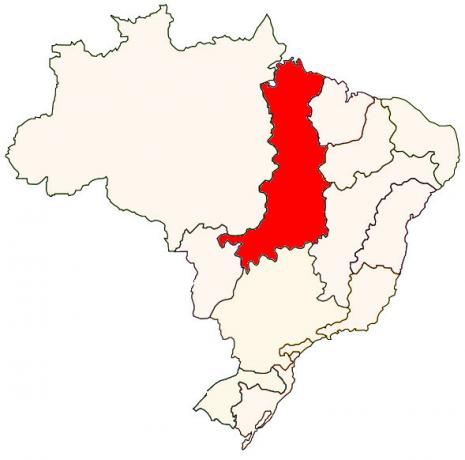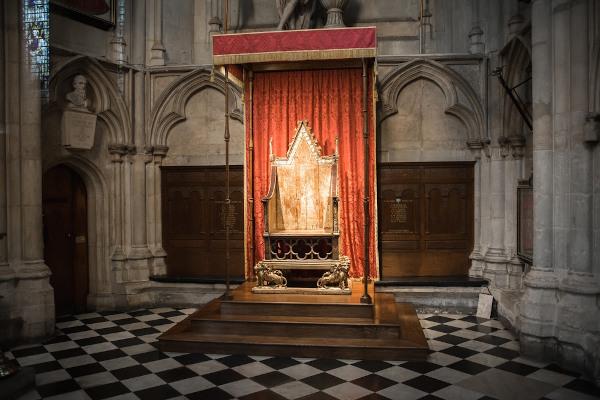THEAraguaia River is an important Brazilian river that crosses states in the regions Midwest and North country, flowing into the Tocantins River. Together, both form the Tocantins-Araguaia Basin. The Araguaia harbors in its course the largest river island in the world, called Ilha do Bananal, in addition to other sand islands that form during the dry season. Close to its course there are numerous areas of environmental protection, as it runs through two major biomes: the Cerrado and the Amazon.
In addition to its importance for environmental balance, this river is essential for the supply of local communities and municipalities through it. swamps and for the economy, which includes both tourist activities and water intended for agricultural and livestock production developed in the region.
Read too: River Nile — the largest in the world in terms of land area
Overview of the Araguaia River
The Araguaia River runs for 2,115 km and bathes municipalities in four Brazilian states: Mato Grosso, Goiás, Tocantins and Pará.
It rises in Serra dos Caiapós and flows into the Tocantins River.
It houses the largest river island in the world, Ilha do Bananal.
It is the second most important river in the Tocantins-Araguaia Hydrographic Basin.
Its waters are essential for the supply of riverside populations and nearby municipalities. It contributes to the economy, with the development of tourism (sand islands) and the supply of water for local production, as well as for shipping and transport.
It houses hundreds of species of fish and a great biodiversity of flora and fauna, bathing two large brazilian biomes: the Cerrado and the Amazon.
General data of the Araguaia River
Length: 2115 km.
Source: Serra dos Caiapós, at 850 meters of altitude.
Main tributaries: das Mortes river, Javaés river, Caiapó river, Crixá-Açú river, Claro river, Garças river and Vermelho river.
Mouth: Tocantins River.
Average flow: 6100 m³/s.
Maximum flow: 7300 m³/s.
Basin area: 380,000 km².
-
Parents: Brazil.
States: Mato Grosso, Goiás, Tocantins and For.
Do not stop now... There's more after the ad ;)
Features of the Araguaia River
The Araguaia River is a entirely Brazilian river, that is, that runs only in the national territory, and of perennial flow. This means that even during the dry or dry period the waters continue to flow, and the river does not disappear. It is 2115 km long, from its source to its mouth in the Tocantins River, on the triple border between the states of Tocantins, Pará and Maranhão.
From its source to its mouth, the Araguaia River runs along the border between two or more units of the federation, from the southern border of Mato Grosso with Goiás, passing through the border between Mato Grosso and Tocantins and between that state and Pará, until reaching the meeting with the Tocantins River, in the region of Bico do Parrot. the Araguaia therefore travels through three Brazilian regions, which are the Midwest, the North and a small part of the Northeast, considering the Maranhão border, and also comprises two biomes, the thick and the amazon.
The rainfall regime is one of the main responsible for supplying the Araguaia River. With its headboard and bed inserted in regions with predominantly tropical, the rains are abundant between the months of October to April, which is when the river floods. From June to September, there is the dry season, which is when the volume of water in the Araguaia river bed is at its lowest. low, and consequently the islands or river beaches appear, which end up being very targeted as attractions tourist.
The Araguaia river basin, which is the area drained by the main river and its tributaries, is 380 thousand km². THE course of the Araguaia River itself is divided into three segments, being them:
Upper Araguaia: It is the second shortest stretch and is located between the source and the Goiás city of Registro do Araguaia, totaling 450 km in length. The gap in this section is 570 meters.
Middle Araguaia: it is the longest stretch of the Araguaia River, with an extension of 1,600 km from Registro do Araguaia to the city of Conceição do Araguaia in Pará. It is in this stretch, formed over an extensive region of plain, that approximately 700 km from the source, the river forks and there is the formation of Ilha do Bananal, considered the largest river island in the world. The gap in this segment is 185 meters.
Lower Araguaia: it is the shortest stretch, which ends at the mouth of the river. The gap is also the shortest, at 11 meters.
Read too: Parts of a river — the elements that configure the dynamics of these watercourses
Source of the Araguaia River
The source of the Araguaia River is located in Serra dos Caiapós, at an altitude of 850 meters above sea level. This formation is located on the border between the Brazilian states of Mato Grosso and Goiás, both belonging to the Midwest region of the country.
Tributaries of the Araguaia River
The main tributaries of the Araguaia River are:
Right bank: Javaés river, Caiapó river, Crixás-Açu river, Vermelho river and Claro river.
Left margin: das Mortes river, Tapirapé river and Garças river.
mouth of the Araguaia river
the Araguaia river empties into rio Tocantins, in the region of Tocantins known as Bico do Papagaio, in the extreme north of the state. It is on the border between Tocantins, Pará and maranhão. Due to this confluence, the Tocantins River is called, from that point on, the Tocantins-Araguaia River and continues towards its mouth on the coast of Pará.
How important is the Araguaia River?

the Araguaia river shelters in its waters an enormous biodiversity, which is composed mostly of freshwater fish and fluvial flora. In addition to aquatic living beings, the animals and plants that make up the biomes crossed by the river depend on this hydrographic system. A part of this diversity is preserved in protected areas and natural parks, such as the Parque Nacional das Emas and the Araguaia National Park, managed by the Chico Mendes Institute for Biodiversity Conservation (ICMBio).
The waters of the Araguaia directly bathe 55 municipalities in four different states, thus supplying millions of inhabitants daily. It is also noted that this population includes indigenous communities that live in areas close to the Araguaia, including on Bananal Island, where the Javaé and Karajá peoples are found. In addition to the water, the hundreds of species of fish provide residents of the riverbanks and region with a source of income and food.
Taking into account the economic importance of the Araguaia River, tourism is an important source of revenue for the region's municipalities, especially river islands and sport fishing. Within the same context, it is worth remembering that the Araguaia River, as well as the Tocantins River, is inserted in an important agricultural region of the country, favoring both agricultural producers in the Northeast and the so-called Center-North, which covers states in the North and Center-West regions. In this way, the Araguaia waters are used in irrigation and agricultural production, having great potential for cargo transport.
The importance of this river also lies in its navigability. The river has approx. 1,800 km of sections where navigation is possible, which are concentrated in the middle and lower Araguaia.
Tocantins-Araguaia Basin

The Araguaia River is the second largest river that makes up the Tocantins-Araguaia Hydrographic Basin. This is the largest hydrographic basin located entirely in Brazilian territory and one of the most important in the South America. It covers an area of more than 86 thousand km² and comprises 470 municipalities in the states of Tocantins, Pará, Maranhão, Mato Grosso, Goiás and the Federal District.
This hydrographic region embodies great socioeconomic and ecological diversity, in addition to having one of the largest energy generation capacities in the country. It is home to important hydroelectric plants, such as the Tucuruí plant. Add to that your great potential for transport, mainly for the disposal of goods derived from the primary sector, since it is located in a mining and agricultural frontier region.
Check out our podcast: Sustainability, environmental degradation and human responsibility
Preservation of the Araguaia River
The Araguaia River has been, for many decades, facing a range of environmental problems associated with intensive fishing, inadequate management of agricultural inputs and waste, which has the river as final destination, to inappropriately discarded garbage, notably that generated by tourism, in addition to of silting resulting from the removal of riparian forest and issues related to other economic activities of natural extraction and the construction of hydroelectric plants.
In view of this situation, it is essential to preserve the Araguaia River and its tributaries for the maintenance of the systemic balance and guarantee of the continuity of the animal and plant species that live in its waters or depend on it directly. The concern with the river and the care to be taken for its maintenance also take into account its importance for the local populations and the establishment of a more sustainable relationship between this resource and the economic activities developed in the region.
Actions to remove garbage from the banks and waters of the Araguaia are carried out periodically by the local population, who volunteer to carry out this task. In some municipalities, initiatives like this have the support of civil society entities and public authorities. Joint projects between state governments, such as the Juntos Pelo Araguaia project, which brings together Mato Grosso and Goiás, were also designed with the objective of protecting the environment and preventing the aggravation of problems such as silting of the river bed. River.
There are also projects aimed at promoting the sustainable development together with environmental preservation on a scale throughout the Tocantins-Araguaia Basin, as well as initiatives focused on the largest access to environmental education and encouraging the adoption of new habits that are beneficial to the river ecosystem Araguaia.
Facts about the Araguaia River
The name Araguaia derives from the Tupi language. It means "river of macaws" or even "river of red macaws".
The Araguaia River is considered one of the best rivers for fishing in Brazil.
The fish found in Araguaia can weigh up to 200 kg, as is the case with the piraíba.
Bananal Island, formed from a fork in the Araguaia River, is the largest river island in the world.
Due to extreme pollution, the Araguaia River received the nickname “dump” in the 1970s.
Grades
Araguaia River gap data: MATTA, M. THE. of S. Surface and groundwater of the Tocantins-Araguaia Basin as a subsidy for an environmental impact study. In: groundwater, 2009. Available here. Accessed on 02 Jan. 2022.
By Paloma Guitarrara
Geography teacher



